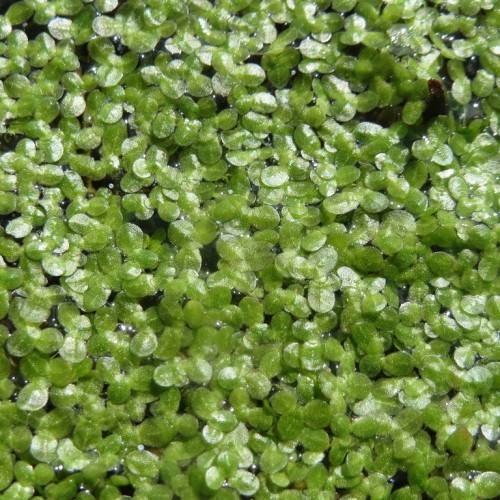
common duckweed
Lemna minor
Cycle:
Herbaceous Perennial
Watering:
Frequent
Hardiness Zone:
4 - 10
Flowers:
Flowers In Spring
Sun:
Full sun
Soil:
Bog
Fruits:
Fruits In Summer Ready In Fall
Growth Rate:
High
Maintenance:
Moderate
Drought Tolerant:
Yes
Salt Tolerant:
Yes
Invasive:
Yes
Care Level:
Low
watering
Common duckweed requires frequent watering to thrive. It should be watered every day or every few days depending on the temperature, with hot temperatures requiring a more frequent watering schedule. It has very shallow roots and so needs to have only a shallow layer of water, usually 2-4 inches, in order to thrive. During colder months, it should be watered less often, but still frequently enough to prevent the roots from drying out.
sunlight
Common duckweed (Lemna minor) prefers bright, full sunlight in order to thrive. As a small, floating aquatic plant, it benefits from approximately 8 hours of direct, unfiltered sunlight each day. This species of duckweed has an exceptionally high metabolism and needs sunlight for photosynthesis in order to produce sugars and oxygen for energy. It would be best for this species of plant to be exposed to sunlight from mid-morning to late-afternoon. This would give them enough time to receive the necessary sunlight while not being exposed to extreme heat and humidity in the middle of the day.
pruning
Common duckweed pruning should be done as needed to control the spread of the plant and help maintain a healthy population. Pruning should be done when the duckweed's surface coverage exceeds 25-50%. To prune, a garden rake or small net should be used to scoop up and remove excess duckweed from the water surface. Prune only as much as needed and be sure not to scoop too deep as this can disturb or damage the roots of the remaining duckweed plants. Pruning should be done at least once a month, or whenever the coverage levels of duckweed start to exceed the desired levels.
